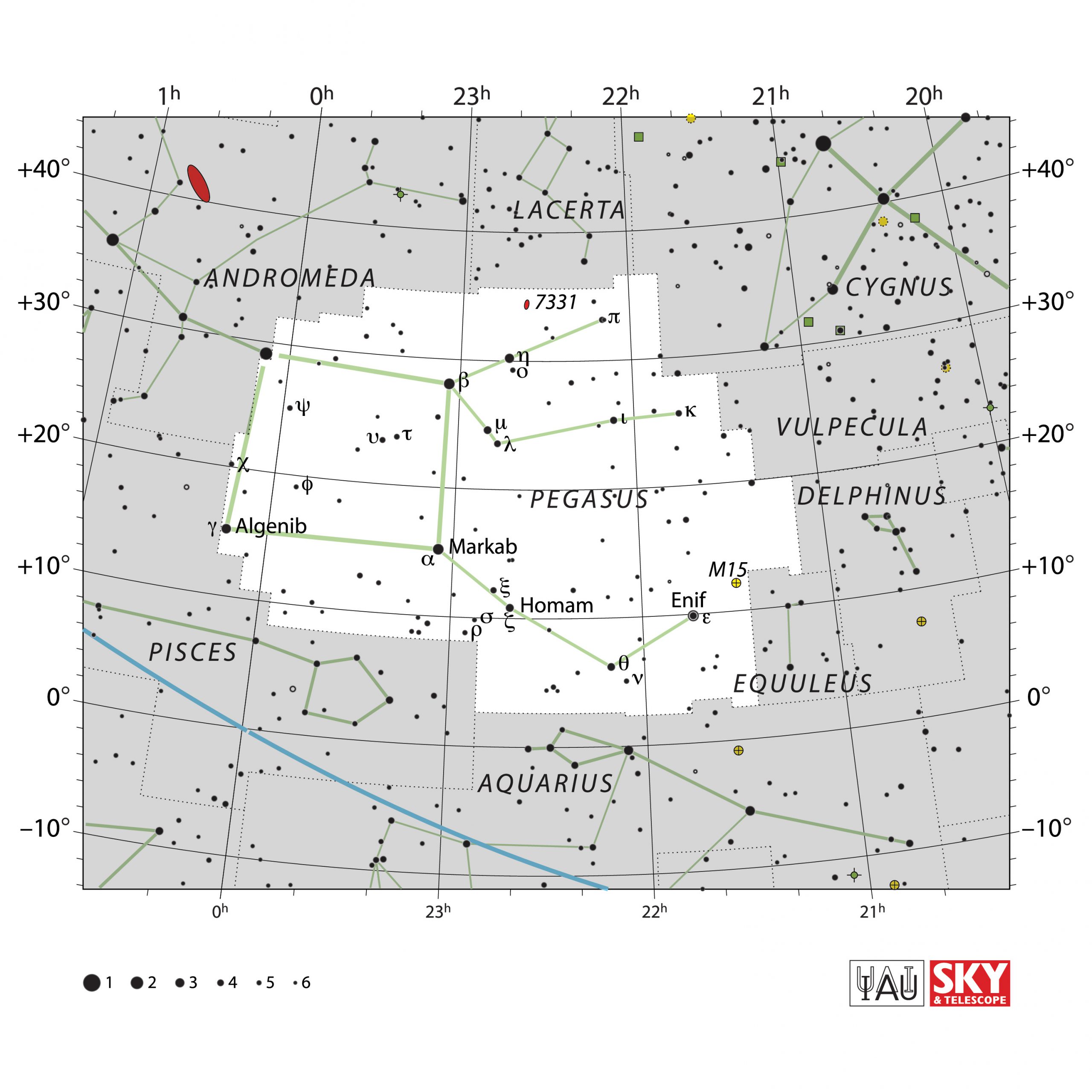Profile / Characteristics
| English translation | Latin declination and pronunciations | Size/ °² | # stars (visible) |
| the Winged Horse | Pegasus – PEG-us-us Pegasi – PEG-us-eye | 1121 | 178 |
Main Star (brightest one):
| Designation | HIP number | name in IAU-CSN | brightness |
| α Peg | HIP 113963 | Markab | 2.48 mag (V) |
Our (modern) Explanation
Easily recognizable is a rectangular shape that is now called The “Pegasus-Square”. This was the original constellation in ancient Mesopotamia. The Greek name, originally “The Horse”, perhaps was a consequence of an ancient Greek pun: The term for “horse” in the Mycaenian dialect is homophonous to the Sumerian term for “square” or “field” which had been seen in the four easily recognizable stars. When the Greeks reinterpreted the word, they needed to imagine a different figure which causes the horse being halved. When they incorporated it in their mythology, they had two options, calling it “Hippe” or “Pegasus”. According to Greek mythology, Hippe is the daughter of Centaurus, Pegasus is a winged horse. Although no wings are recognizable (as stated by Greek astronomers), the latter version was promoted by the Romans and remained in mediaeval and early modern celestial maps.
Ancient Globes
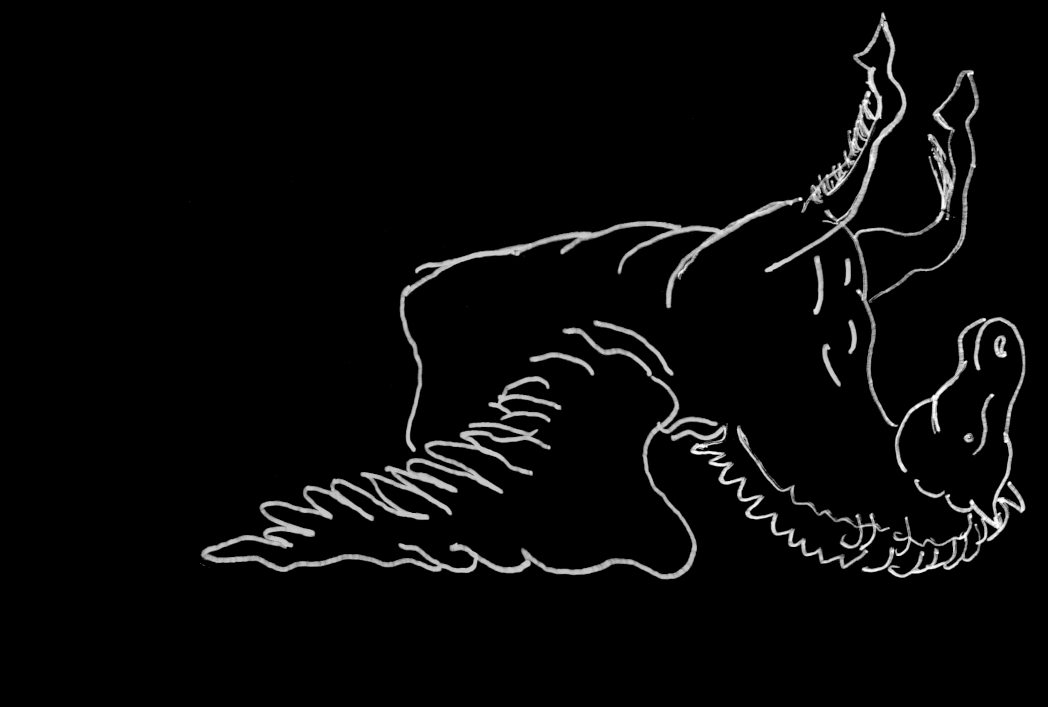
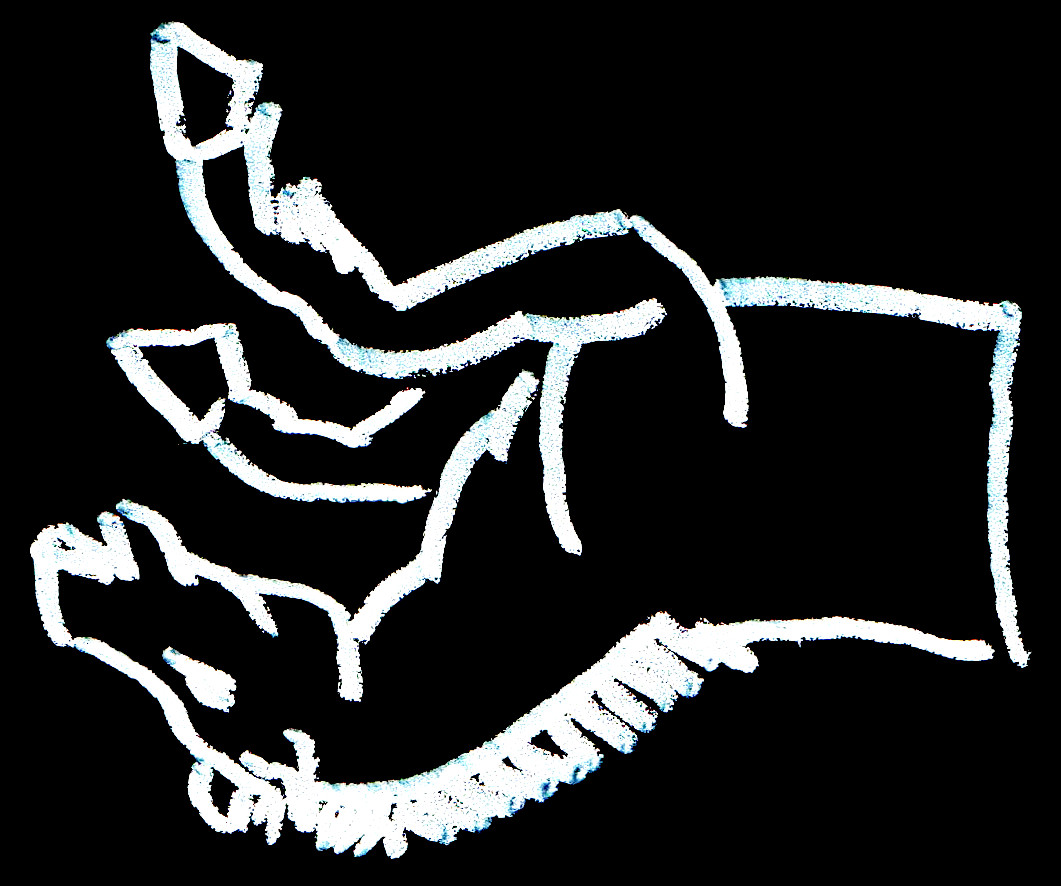
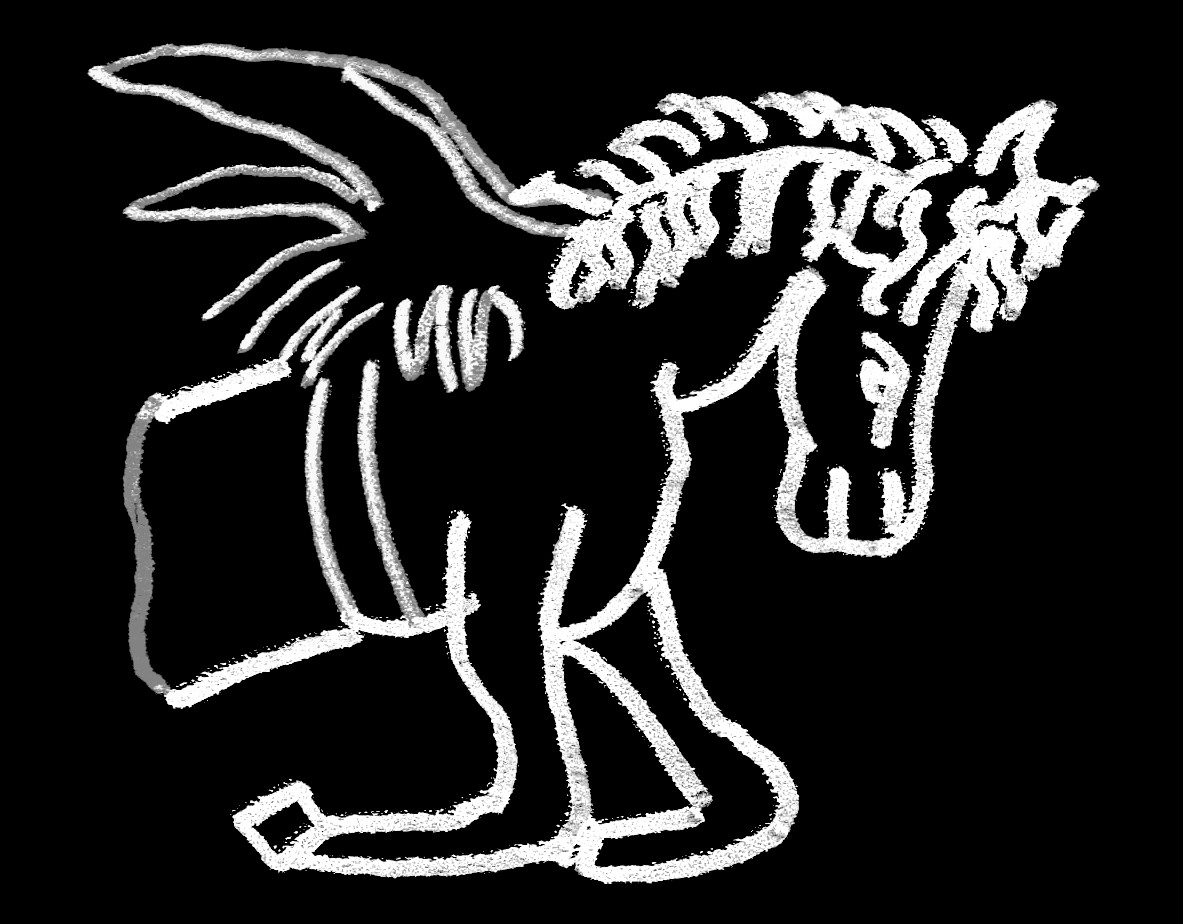
Farnese Globe
Kugel Globe
Mainz Globe
Ancient Lore & Meaning
Aratus
Reference:
English translation by Douglas Kidd (1997).
Aratus: Phaenomena, Cambridge Classical Texts and Commentaries, Series Number 34
Pseudo-Eratosthenes
only half of it is depicted. Aratus: it is the horse that caused a spring on the mountain Helicon. Others say, it is Pegasus after the fall of Bellerophon which is not believed by people who point out that there are no wings. Euripides says, it is Hippe, the daughter of the centaur Cheiron who was pregnant from Aiolos and hided from her father.
References:
French translation by:
Jordi Pàmias i Massana and Arnaud Zucker (2013). Ératosthènes de Cyrène – Catastérismes, Les Belles Lettres, Paris
English version in:
Robin Hard (2015): Eratosthenes and Hyginus Constellation Myths with Aratus’s Phaenomena, Oxford World’s Classics
Modern and Mediaeval Depiction

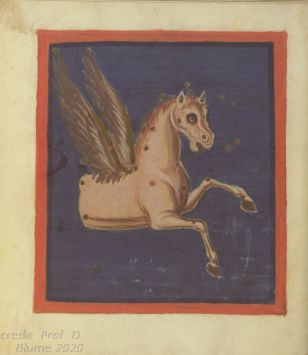
Depiction in Stellarium (by Fabien Chéreau, since 2000 CE)
depiction in the Leiden Aratea (9th century CE)
Early Modern Interpretation
Contemporary
As one of their first tasks in the 1920s, the newly founded International Astronomical Union (IAU) established constellation standards. The Belgian astronomer Eugène Delporte was assigned to the task to define borders of constellations parallel to lines of declination and right ascension. They were accepted by the General Assembly in 1928. The standardized names and abbreviations had already been accepted in 1922 and 1925.
